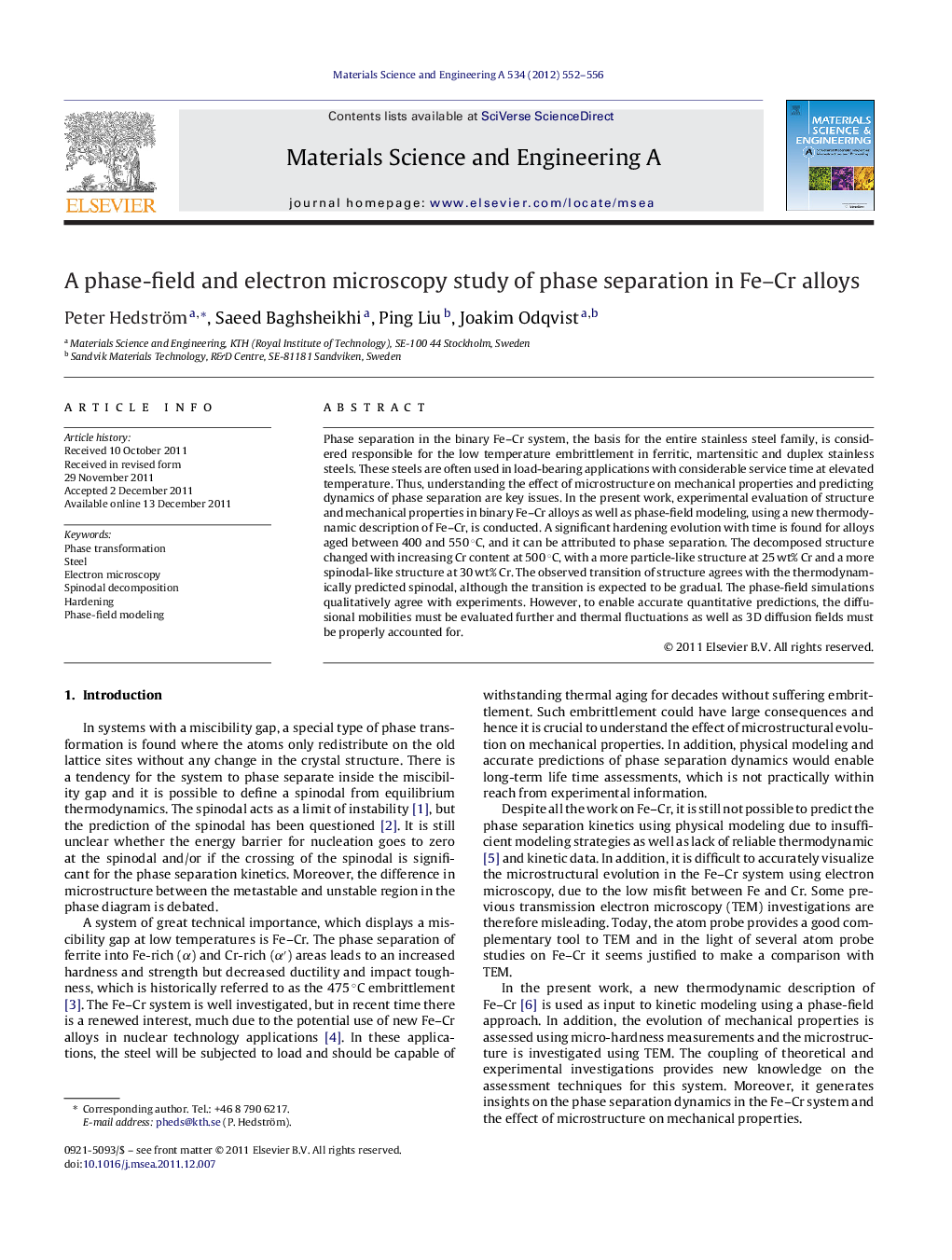| Article ID | Journal | Published Year | Pages | File Type |
|---|---|---|---|---|
| 1577607 | Materials Science and Engineering: A | 2012 | 5 Pages |
Phase separation in the binary Fe–Cr system, the basis for the entire stainless steel family, is considered responsible for the low temperature embrittlement in ferritic, martensitic and duplex stainless steels. These steels are often used in load-bearing applications with considerable service time at elevated temperature. Thus, understanding the effect of microstructure on mechanical properties and predicting dynamics of phase separation are key issues. In the present work, experimental evaluation of structure and mechanical properties in binary Fe–Cr alloys as well as phase-field modeling, using a new thermodynamic description of Fe–Cr, is conducted. A significant hardening evolution with time is found for alloys aged between 400 and 550 °C, and it can be attributed to phase separation. The decomposed structure changed with increasing Cr content at 500 °C, with a more particle-like structure at 25 wt% Cr and a more spinodal-like structure at 30 wt% Cr. The observed transition of structure agrees with the thermodynamically predicted spinodal, although the transition is expected to be gradual. The phase-field simulations qualitatively agree with experiments. However, to enable accurate quantitative predictions, the diffusional mobilities must be evaluated further and thermal fluctuations as well as 3D diffusion fields must be properly accounted for.
► Experimental characterization and Phase-field modeling of phase separation in Fe–Cr. ► Transition from particle-like to spinodal-like structure observed. ► Structural evolution generates increased hardness. ► Results in agreement with recent thermodynamic description. ► Quantitative kinetic modeling must include thermal noise and improved kinetic data.
